Brealey, Myers. Principles of Corporate Finance. 7th edition
Подождите немного. Документ загружается.

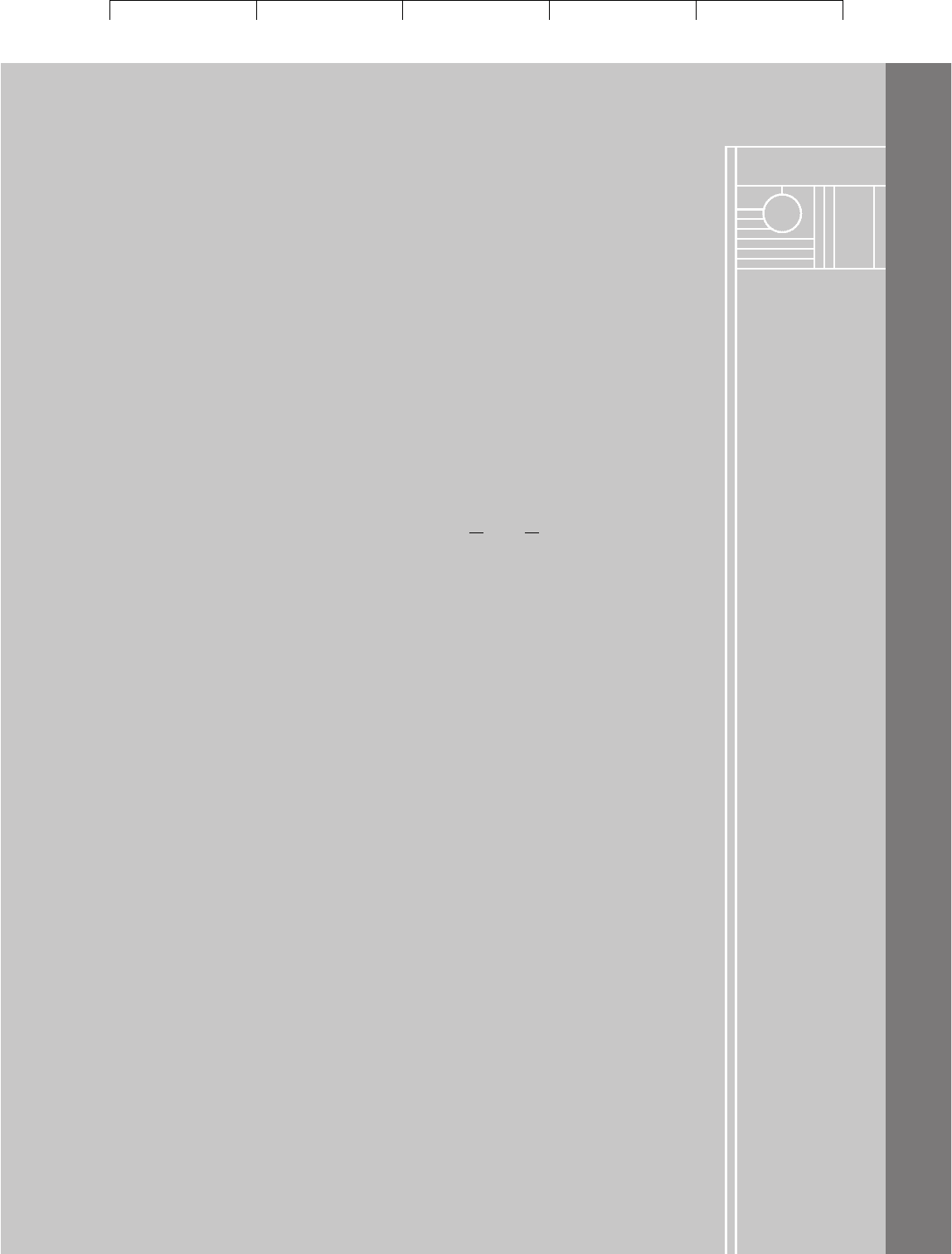
Brealey−Meyers:
Principles of Corporate
Finance, Seventh Edition
V. Dividend Policy and
Capital Structure
19. Financing and
Valuation
© The McGraw−Hill
Companies, 2003
Investment decisions always have side effects on financing: Every dollar spent
has to be raised somehow. Sometimes the side effects are irrelevant or at least
unimportant. In an ideal world with no taxes, transaction costs, or other market
imperfections, only investment decisions would affect firm value. In such a
world firms could analyze all investment opportunities as if they were all-
equity-financed. Firms would decide which assets to buy and then worry about
getting the money to pay for them. No one making investment decisions would
worry about where the money might come from because debt policy, dividend
policy, and all other financing choices would have no impact on stockholders’
wealth.
Side effects cannot be ignored in practice. There are two ways to take them into
account. You can calculate NPV by discounting at an adjusted discount rate, or you
can discount at the opportunity cost of capital and then add or subtract the pres-
ent value of financing side effects. The second approach is called adjusted present
value, or APV.
The most commonly used adjusted discount rate is the after-tax weighted-
average cost of capital, or WACC:
Here and are the expected rates of return demanded by investors in the firm’s
debt and equity securities, respectively; D and E are the current market values of
debt and equity; and V is the total market value of the firm ( ).
Strictly speaking, this formula works only for projects that are carbon copies of
the existing firm—projects with the same business risk that will be financed to
maintain the firm’s current, market debt ratio. But firms can use WACC as a bench-
mark rate to be adjusted for differences in business risk or financing. We suggested
a three-step procedure for adjusting a company’s WACC for differences between
project and company debt ratios.
Discounting project cash flows at the WACC assumes that debt is rebalanced
every period to keep a constant debt-to-market-value ratio. The amount of
debt supported by a project is supposed to rise or fall with the project’s after-
the-fact success or failure. We called this Financing Rule 2. The WACC formula
also assumes that financing matters only because of interest tax shields. When
this or other assumptions are violated, only APV will give an absolutely cor-
rect answer.
APV is, in concept at least, simple. First calculate the present value of the proj-
ect as if there are no important side effects. Then adjust present value to calculate
the project’s total impact on firm value. The rule is to accept the project if APV is
positive:
The base-case NPV is the project’s NPV computed assuming all-equity financing
and perfect capital markets. Think of it as the project’s value if it were set up as
a separate mini-firm. You would compute the mini-firm’s value by forecasting its
Accept project if APV base-case NPV
present value
of financing
side effects
0
V D E
r
E
r
D
WACC r
D
11 T
c
2
D
V
r
E
E
V
SUMMARY
Visit us at www.mhhe.com/bm7e

Brealey−Meyers:
Principles of Corporate
Finance, Seventh Edition
V. Dividend Policy and
Capital Structure
19. Financing and
Valuation
© The McGraw−Hill
Companies, 2003
552 PART V Dividend Policy and Capital Structure
cash flows and discounting at the opportunity cost of capital for the project. The cash
flows should be net of the taxes that an all-equity-financed mini-firm would pay.
Financing side effects are evaluated one by one and their present values are
added to or subtracted from base-case NPV. We looked at several cases:
1. Issue costs. If accepting the project forces the firm to issue securities, then the
present value of issue costs should be subtracted from base-case NPV.
2. Interest tax shields. Debt interest is a tax-deductible expense. Most people believe
that interest tax shields contribute to firm value. Thus a project that prompts the
firm to borrow more generates additional value. The project’s APV is increased
by the present value of interest tax shields on debt the project supports.
3. Special financing. Sometimes special financing opportunities are tied to project
acceptance. For example, the government might offer subsidized financing for
socially desirable projects. You simply compute the present value of the financ-
ing opportunity and add it to base-case NPV.
Remember not to confuse contribution to corporate debt capacity with the immedi-
ate source of funds for investment. For example, a firm might, as a matter of con-
venience, borrow $1 million for a $1 million research program. But the research
would be unlikely to contribute $1 million in debt capacity; a large part of the $1
million new debt would be supported by the firm’s other assets.
Also remember that debt capacity is not meant to imply an absolute limit on how
much the firm can borrow. The phrase refers to how much it chooses to borrow. Nor-
mally the firm’s optimal debt level increases as its assets expand; that is why we
say that a new project contributes to corporate debt capacity.
Calculating APV may require several steps: one step for base-case NPV and one
for each financing side effect. Many firms try to calculate APV in a single calcula-
tion. They do so by the following procedure: After-tax cash flows are forecasted in
the usual way—that is, as if the project is all-equity-financed. But the discount rate
is adjusted to reflect the financing side effects. If the discount rate is adjusted cor-
rectly, the result is APV:
WACC is the leading example of an adjusted discount rate.
This chapter is almost 100 percent theory. The theory is difficult. If you think
you understand all the formulas, assumptions, and relationships on the first
reading, we suggest psychiatric assistance. We can, however, offer one simple,
bullet-proof, easy-to-remember rule: Discount safe, nominal cash flows at the
after-tax borrowing rate.
NPV at adjusted
discount rate
APV
NPV at opportunity
cost of capital
present value of
financing side effects
FURTHER
READING
The adjusted-present-value rule was developed in:
S. C. Myers: “Interactions of Corporate Financing and Investment Decisions—Implications
for Capital Budgeting,” Journal of Finance, 29:1–25 (March 1974).
The Harvard Business Review has published a popular account of APV:
T. A. Luehrman, “Using APV: A Better Tool for Valuing Operations,” Harvard Business Re-
view 75:145–154 (May–June 1997).
Visit us at www.mhhe.com/bm7e

Brealey−Meyers:
Principles of Corporate
Finance, Seventh Edition
V. Dividend Policy and
Capital Structure
19. Financing and
Valuation
© The McGraw−Hill
Companies, 2003
CHAPTER 19 Financing and Valuation 553
QUIZ
1. Calculate the weighted-average cost of capital (WACC) for Federated Junkyards of
America, using the following information:
•
Debt: $75,000,000 book value outstanding. The debt is trading at 90 percent of par.
The yield to maturity is 9 percent.
• Equity: 2,500,000 shares selling at $42 per share. Assume the expected rate of return
on Federated’s stock is 18 percent.
• Taxes: Federated’s marginal tax rate is .
What are the key assumptions underlying your calculation? For what type of project
would Federated’s weighted-average cost of capital be the right discount rate?
2. Suppose Federated Junkyards decides to move to a more conservative debt policy. A
year later its debt ratio is down to 15 percent ( ). The interest rate has dropped
to 8.6 percent. Recalculate Federated’s WACC under these new assumptions. The com-
pany’s business risk, opportunity cost of capital, and tax rate have not changed. Use the
three-step procedure explained in Section 19.3.
3. True or false? Use of the WACC formula assumes
a. A project supports a fixed amount of debt over the project’s economic life.
b. The ratio of the debt supported by a project to project value is constant over the
project’s economic life.
c. The firm rebalances debt, each period, keeping the debt-to-value ratio constant.
4. What is meant by the flow-to-equity valuation method? What discount rate is used
in this method? What assumptions are necessary for this method to give an accurate
valuation?
5. True or false? The APV method
a. Starts with a base-case value for the project.
b. Calculates the base-case value by discounting project cash flows, forecasted
assuming all-equity financing, at the WACC for the project.
c. Is especially useful when debt is to be paid down on a fixed schedule.
d. Can be used to calculate an adjusted discount rate for a company or a project.
6. Explain the difference between Financing Rules 1 (debt fixed) and 2 (debt rebalanced).
7. What is meant by financing “side effects” in an APV valuation? Give at least three ex-
amples of side effects encountered in practice.
8. A project costs $1 million and has a base-case NPV of exactly zero ( ). What is
the project’s APV in the following cases?
a. If the firm invests, it has to raise $500,000 by stock issue. Issue costs are 15 percent
of net proceeds.
b. The firm has ample cash on hand. But if it invests, it will have access to $500,000
of debt financing at a subsidized interest rate. The present value of the subsidy
is $175,000.
NPV 0
D/V .15
T
c
.35
Visit us at www.mhhe.com/bm7e
There have been dozens of articles on the weighted-average cost of capital and other issues discussed
in this chapter. Here are two:
J. Miles and R. Ezzell: “The Weighted Average Cost of Capital, Perfect Capital Markets, and
Project Life: A Clarification,” Journal of Financial and Quantitative Analysis, 15:719–730 (Sep-
tember 1980).
R. A. Taggart, Jr.: “Consistent Valuation and Cost of Capital Expressions with Corporate and
Personal Taxes,” Financial Management, 20:8–20 (Autumn 1991).
The valuation rule for safe, nominal cash flows is developed in:
R. S. Ruback: “Calculating the Market Value of Risk-Free Cash Flows,” Journal of Financial
Economics, 15:323–339 (March 1986).
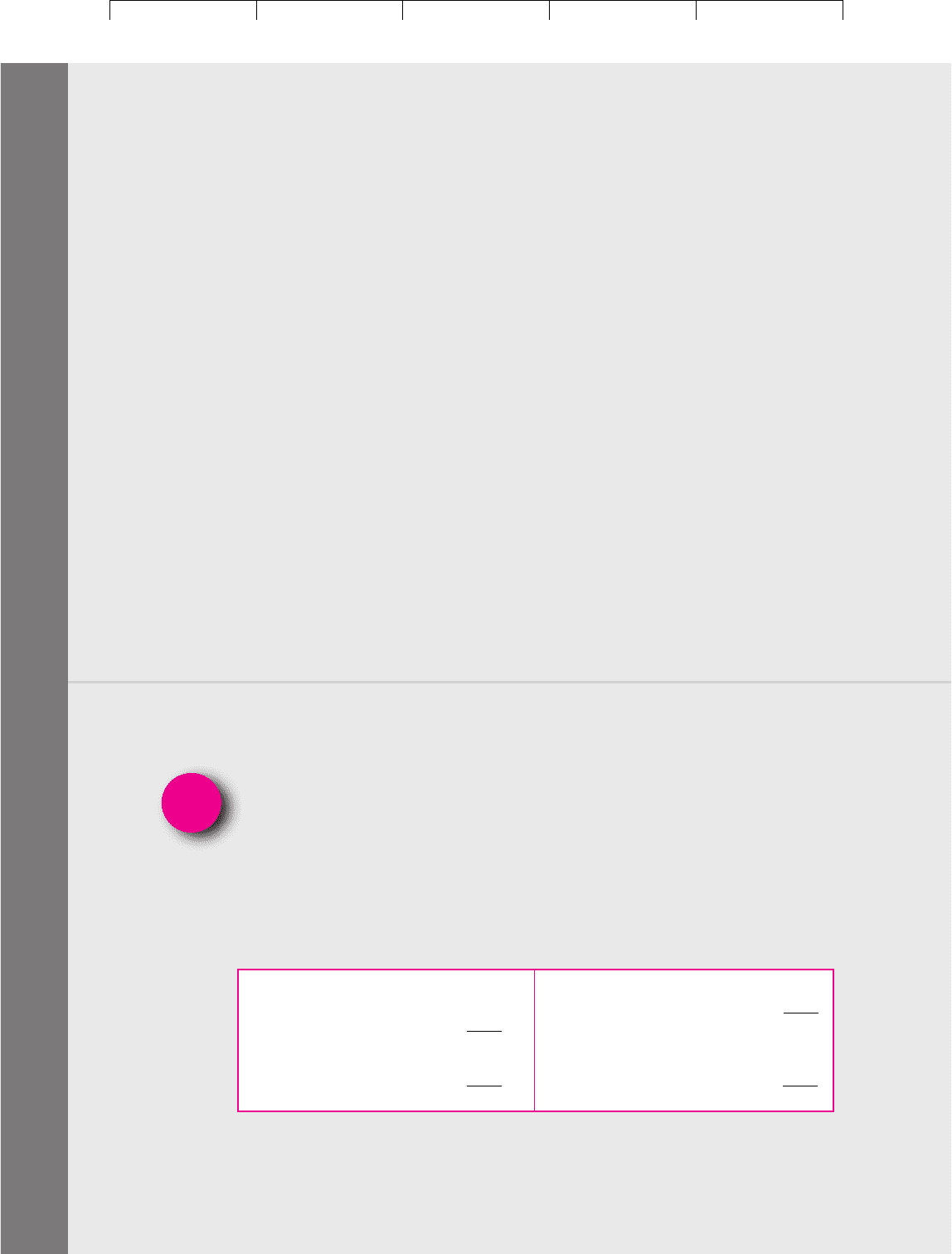
Brealey−Meyers:
Principles of Corporate
Finance, Seventh Edition
V. Dividend Policy and
Capital Structure
19. Financing and
Valuation
© The McGraw−Hill
Companies, 2003
554 PART V Dividend Policy and Capital Structure
c. If the firm invests, its debt capacity increases by $500,000. The present value of
interest tax shields on this debt is $76,000.
9. Whispering Pines, Inc., is all-equity-financed. The expected rate of return on the com-
pany’s shares is 12 percent.
a. What is the opportunity cost of capital for an average-risk Whispering Pines
investment?
b. Suppose the company issues debt, repurchases shares, and moves to a 30 percent
debt-to-value ratio ( ). What will the company’s weighted-average cost of
capital be at the new capital structure? The borrowing rate is 7.5 percent and the
tax rate is 35 percent.
10. Consider the APV of the solar heater project, as calculated in Table 19.1. How would the
APV change if the net tax shield per dollar of interest were not , but ?
11. Consider a project lasting one year only. The initial outlay is $1,000 and the expected in-
flow is $1,200. The opportunity cost of capital is . The borrowing rate is ,
and the net tax shield per dollar of interest is .
a. What is the project’s base-case NPV?
b. What is its APV if the firm borrows 30 percent of the project’s required investment?
12. The WACC formula seems to imply that debt is “cheaper” than equity—that is, that a firm
with more debt could use a lower discount rate. Does this make sense? Explain briefly.
13. What discount rate should be used to value safe, nominal cash flows? Explain briefly.
14. The U.S. government has settled a dispute with your company for $16 million. It is com-
mitted to pay this amount in exactly 12 months. However, your company will have to
pay tax on the award at a marginal tax rate of 35 percent. What is the award worth? The
one-year Treasury rate is 5.5 percent.
T
*
T
c
.35
r
D
.10r .20
T
*
.10T
c
.35
D/V .30
PRACTICE
QUESTIONS
1. Table 19.2 shows a book balance sheet for the Wishing Well Motel chain. The company’s
long-term debt is secured by its real estate assets, but it also uses short-term bank fi-
nancing. It pays 10 percent interest on the bank debt and 9 percent interest on the se-
cured debt. Wishing Well has 10 million shares of stock outstanding, trading at $90 per
share. The expected return on Wishing Well’s common stock is 18 percent.
Calculate Wishing Well’s WACC. Assume that the book and market values of
Wishing Well’s debt are the same. The marginal tax rate is 35 percent.
2. Suppose Wishing Well is evaluating a new motel and resort on a romantic site in
Madison County, Wisconsin. Explain how you would forecast the after-tax cash flows
for this project. (Hints: How would you treat taxes? Interest expense? Changes in
working capital?)
3. To finance the Madison County project, Wishing Well will have to arrange an additional
$80 million of long-term debt and make a $20 million equity issue. Underwriting fees,
Visit us at www.mhhe.com/bm7e
Cash, marketable securities 100 Accounts payable 120
Inventory 50 Bank loan 280
Accounts receivable 200 Current liabilities 400
Current assets 350
Real estate 2,100 Long-term debt 1,800
Other assets 150 Equity 400
Total 2,600 Total 2,600
TABLE 19.2
Balance sheet for
Wishing Well, Inc.
(figures in $ millions).
EXCEL
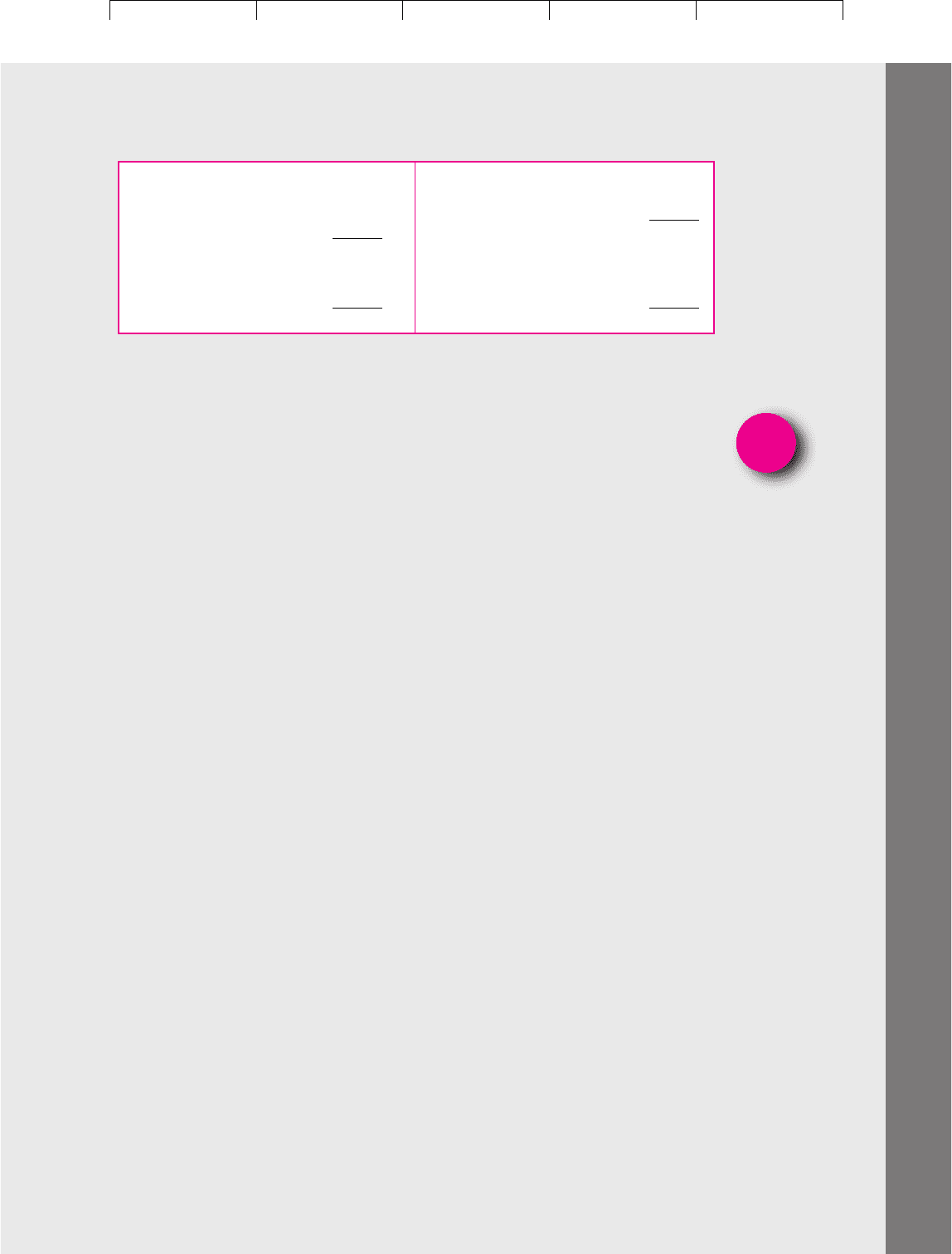
Brealey−Meyers:
Principles of Corporate
Finance, Seventh Edition
V. Dividend Policy and
Capital Structure
19. Financing and
Valuation
© The McGraw−Hill
Companies, 2003
CHAPTER 19 Financing and Valuation 555
Visit us at www.mhhe.com/bm7e
spreads, and other costs of this financing will total $4 million. How would you take this
into account in valuing the proposed investment?
4. Table 19.3 shows a simplified balance sheet for Rensselaer Felt. Calculate this com-
pany’s weighted-average cost of capital. The debt has just been refinanced at an inter-
est rate of 6 percent (short term) and 8 percent (long term). The expected rate of return
on the company’s shares is 15 percent. There are 7.46 million shares outstanding, and
the shares are trading at $46. The tax rate is 35 percent.
5. How will Rensselaer Felt’s WACC and cost of equity change if it issues $50 million in
new equity and uses the proceeds to retire long-term debt? Assume the company’s bor-
rowing rates are unchanged. Use the three-step procedure from Section 19.3.
6. Look one more time at practice question 4. Renssalaer Felt’s pretax operating income is
$100.5 million. Assume for simplicity that this figure is expected to remain constant for-
ever. Value the company by the flow-to-equity method.
7. Rapidly growing companies may have to issue shares to finance capital expenditures.
In doing so, they incur underwriting and other issue costs. Some analysts have tried to
adjust WACC to account for these costs. For example, if issue costs are 8 percent of eq-
uity issue proceeds, and equity issues account for all of equity financing, the cost of eq-
uity might be divided by . This would increase a 15 percent cost of equity
to percent.
Explain why this sort of adjustment is not a smart idea. What is the correct way to
take issue costs into account in project valuation?
8. Digital Organics (DO) has the opportunity to invest $1 million now ( ) and expects
after-tax returns of $600,000 in and $700,000 in . The project will last for two
years only. The appropriate cost of capital is 12 percent with all-equity financing, the
borrowing rate is 8 percent, and DO will borrow $300,000 against the project. This debt
must be repaid in two equal installments. Assume debt tax shields have a net value of
$.30 per dollar of interest paid. Calculate the project’s APV using the procedure fol-
lowed in Table 19.1.
9. You are considering a five-year lease of office space for R&D personnel. Once signed,
the lease cannot be canceled. It would commit your firm to six annual $100,000 pay-
ments, with the first payment due immediately. What is the present value of the lease
if your company’s borrowing rate is 9 percent and its tax rate is 35 percent? Note: The
lease payments would be tax-deductible.
10. Consider another perpetual project like the crusher described in Section 19.1. Its initial
investment is $1,000,000, and the expected cash inflow is $85,000 a year in perpetuity.
The opportunity cost of capital with all-equity financing is 10 percent, and the project
allows the firm to borrow at 7 percent. Assume the net tax advantage to borrowing is
$.35 per dollar of interest paid ( ).
Use APV to calculate this project’s value.
T* T
c
.35
t 2t 1
t 0
15/.92 16.3
1 .08 .92
Cash and marketable
securities 1,500 Short-term debt 75,600
Accounts receivable 120,000 Accounts payable 62,000
Inventories 125,000 Current liabilities 137,600
Current assets 246,500
Property, plant,
Long-term debt 208,600
and equipment 302,000 Deferred taxes 45,000
Other assets 89,000 Shareholders’ equity 246,300
Total 637,500 Total 637,500
TABLE 19.3
Simplified book
balance sheet for
Rensselaer Felt
(figures in
$ thousands).
EXCEL

Brealey−Meyers:
Principles of Corporate
Finance, Seventh Edition
V. Dividend Policy and
Capital Structure
19. Financing and
Valuation
© The McGraw−Hill
Companies, 2003
556 PART V Dividend Policy and Capital Structure
Visit us at www.mhhe.com/bm7e
a. Assume first that the project will be partly financed with $400,000 of debt and that
the debt amount is to be fixed and perpetual.
b. Then assume that the initial borrowing will be increased or reduced in proportion
to changes in the future market value of this project.
Explain the difference between your answers to (a) and (b).
11. Suppose the project described in practice question 10 is to be undertaken by a univer-
sity. Funds for the project will be withdrawn from the university’s endowment, which
is invested in a widely diversified portfolio of stocks and bonds. However, the univer-
sity can also borrow at 7 percent. The university is tax exempt.
The university treasurer proposes to finance the project by issuing $400,000 of
perpetual bonds at 7 percent and by selling $600,000 worth of common stocks from
the endowment. The expected return on the common stocks is 10 percent. He there-
fore proposes to evaluate the project by discounting at a weighted-average cost of
capital, calculated as
What’s right or wrong with the treasurer’s approach? Should the university invest?
Should it borrow? Would the project’s value to the university change if the treasurer fi-
nanced the project entirely by selling common stocks from the endowment?
12. What is meant by an adjusted discount rate ( in our notation)? In what circumstances
would an adjusted discount rate not equal WACC?
13. The Bunsen Chemical Company is currently at its target debt ratio of 40 percent. It is
contemplating a $1 million expansion of its existing business. This expansion is ex-
pected to produce a cash inflow of $130,000 a year in perpetuity.
The company is uncertain whether to undertake this expansion and how to fi-
nance it. The two options are a $1 million issue of common stock or a $1 million
issue of 20-year debt. The flotation costs of a stock issue would be around 5 percent
of the amount raised, and the flotation costs of a debt issue would be around
1
1
⁄2 percent.
Bunsen’s financial manager, Miss Polly Ethylene, estimates that the required re-
turn on the company’s equity is 14 percent, but she argues that the flotation costs in-
crease the cost of new equity to 19 percent. On this basis, the project does not appear
viable.
On the other hand, she points out that the company can raise new debt on a 7 per-
cent yield which would make the cost of new debt 8
1
⁄2 percent. She therefore recom-
mends that Bunsen should go ahead with the project and finance it with an issue of
long-term debt.
Is Miss Ethylene right? How would you evaluate the project?
14. Curtis Bog, chief financial officer of Sphagnum Paper Corporation, is reviewing a consul-
tant’s analysis of Sphagnum’s weighted-average cost of capital. The consultant proposes
Mr. Bog wants to check that this calculation is consistent with the capital asset pricing
model. He has observed or estimated the following numbers:
.1192,
or about 12%
11 .352
1.1032 1.552 .1831.452
WACC 11 T
c
2r
D
D
V
r
E
E
V
r*
.088, or 8.8%
.07 a
400,000
1,000,000
b .10 a
600,000
1,000,000
b
r r
D
D
V
r
E
E
V

Brealey−Meyers:
Principles of Corporate
Finance, Seventh Edition
V. Dividend Policy and
Capital Structure
19. Financing and
Valuation
© The McGraw−Hill
Companies, 2003
CHAPTER 19 Financing and Valuation 557
Visit us at www.mhhe.com/bm7e
Note: We suggest you simplify by ignoring personal income taxes and assuming
that the promised and expected rates of returns on Sphagnum debt are equal.
15. Nevada Hydro is 40 percent debt-financed and has a weighted-average cost of capital
of 9.7 percent:
Banker’s Tryst Company is advising Nevada Hydro to issue $75 million of pre-
ferred stock at a dividend yield of 9 percent. The proceeds would be used to repurchase
and retire common stock. The preferred issue would account for 10 percent of the preis-
sue market value of the firm.
Banker’s Tryst argues that these transactions would reduce Nevada Hydro’s
WACC to 9.4 percent:
Do you agree with this calculation? Explain.
16. Sometimes APV is particularly useful in international capital investment decisions.
What kinds of tax or financing side effects are encountered in international projects?
17. Consider a different financing scenario for the solar water heater project discussed in
Section 19.4. The project requires $10 million and has a base-case NPV of $170,000. Sup-
pose the firm happens to have $5 million banked that could be used for the project.
The government, eager to encourage solar energy, offers to help finance the project
by lending $5 million at a subsidized rate of 5 percent. The loan calls for the firm to pay
the government $647,500 annually for 10 years (this amount includes both principal
and interest).
a. What is the value of being able to borrow from the government at 5 percent?
Assume the company’s normal borrowing rate is 8 percent and the corporate tax
rate is 35 percent.
b. Suppose the company’s normal debt policy is to borrow 50 percent of the book
value of its assets. It calculates the present value of interest tax shields by the
procedure shown in Table 19.1 and includes this present value in APV. Should it do
so here, given the government’s offer of cheap financing?
18. Table 19.4 is a simplified book balance sheet for Phillips Petroleum in June 2001. Other
information:
.094, or 9.4%
WACC 11 .3521.08521.402 .091.102 .1251.502
11 .352 1.0852 1.402 .1251.602 .097
WACC 11 T
c
2r
D
D
V
r
E
E
V
EXCEL
Betas ,
Expected market risk premium ( ) .085
Risk-free rate of interest ( ) 9 percentr
f
r
m
r
f

equity
1.09
debt
.15
Number of outstanding shares (N) 256.2 million
Price per share (P) $59
Beta based on 60 monthly returns,
against the S&P Composite:
Interest rates
Treasury bills 3.5%
20-year Treasury bonds 5.8
New issue rate for Phillips assuming
straight long-term debt 7.4
Marginal tax rate 35%
 .66
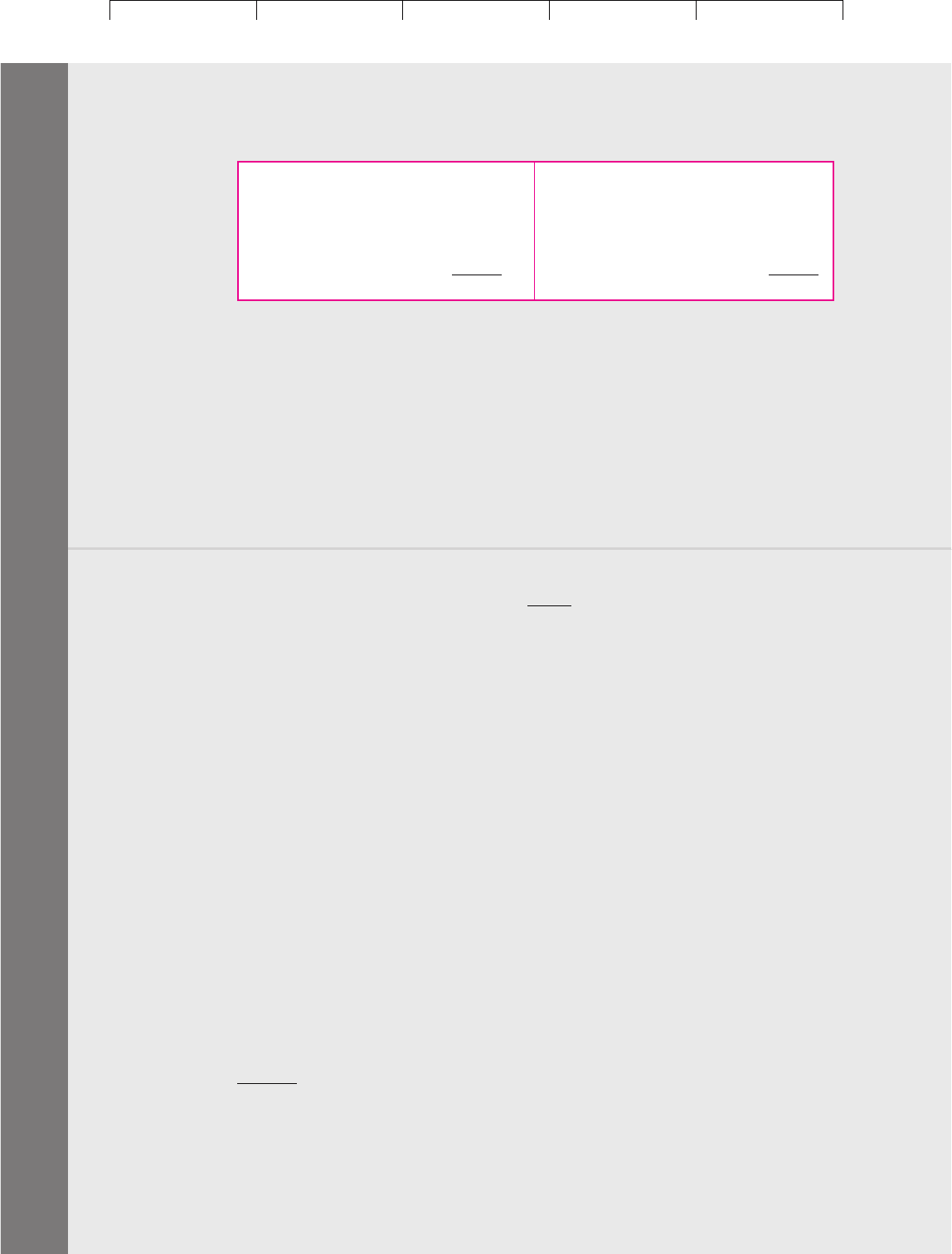
Brealey−Meyers:
Principles of Corporate
Finance, Seventh Edition
V. Dividend Policy and
Capital Structure
19. Financing and
Valuation
© The McGraw−Hill
Companies, 2003
558 PART V Dividend Policy and Capital Structure
a. Calculate Phillips’s WACC. Use the capital asset pricing model and the data given
above. Make additional assumptions and approximations as necessary.
b. What would Phillips’s WACC be if it moved to and maintained a debt—market
value ratio (D/V) of 25 percent?
19. In question 18 you calculated a WACC for Phillips Petroleum. Phillips could also use
an industry WACC. Under what conditions would the industry WACC be the better
choice? Explain.
CHALLENGE
QUESTIONS
1. In footnote 21 we referred to the Miles–Ezzell formula:
Derive this formula as the adjusted discount rate ( ) for a one-period project. Then
show that the formula correctly values projects of any life if the company follows Fi-
nancing Rule 2.
2. In Section 19.3 we proposed a three-step procedure for calculating WACC at differ-
ent debt ratios. The Miles–Ezzell formula can be used for the same purpose. Set up
a numerical example and use these two approaches to calculate how WACC changes
with financial leverage. Assume . You will get slightly different numerical an-
swers. Why?
3. Consider a project generating a level, perpetual stream of cash flows. The project is fi-
nanced at an initial debt-to-value ratio L. The debt is likewise perpetual. But the com-
pany follows Financing Rule 1: The dollar amount of debt is kept constant. Derive a
formula for the adjusted discount rate to fit these assumptions.
33
What does this for-
mula imply for (a) the difference between WACC and the opportunity cost of capital r
and (b) the formulas for levering and relevering the cost of equity?
4. Financing Rule 2 ties the level of future interest tax shields to the future value of the
project or company. That means the interest tax shields are risky and worth less than if
the company followed Financing Rule 1. Does that mean that Financing Rule 1 is better
for stockholders?
r*
T* T
c
r*
r* r Lr
D
T* c
1 r
1 r
D
d WACC
Visit us at www.mhhe.com/bm7e
Current assets 2,202 Current liabilities 2,780
Net property, plant,
and equipment 15,124 Long-term debt 6,268
Investments and other assets 3,428 Deferred taxes 2,144
Other liabilities 2,510
Shareholders’ equity 7,052
Total 20,754 Total 20,754
TABLE 19.4
Simplified book
balance sheet for
Phillips Petroleum,
June 2001 (figures in
$ millions).
33
Here you are following in MM’s footsteps. See F. Modigliani and M. H. Miller, “Corporate Income
Taxes and the Cost of Capital: A Correction,” American Economic Review 53 (June 1963), pp. 433–443, and
“Some Estimates of the Cost of Capital to the Electric Utility Industry,” American Economic Review 56
(June 1966), pp. 333–391.

Brealey−Meyers:
Principles of Corporate
Finance, Seventh Edition
V. Dividend Policy and
Capital Structure
19. Financing and
Valuation
© The McGraw−Hill
Companies, 2003
RELATED WEBSITES
Some materials on cash and stock dividends is
provided by:
www
.e-analytics.com
www
.dripcentral.com
(information on
dividend reinvestment plans)
John Graham’s website contains material on cap-
ital structure:
www
.duke.edu/~jgraham
ValuePro provides software and data for estimat-
ing WACCs:
www
.valuepro.net
PART FIVE
RELATED
WEBSITES
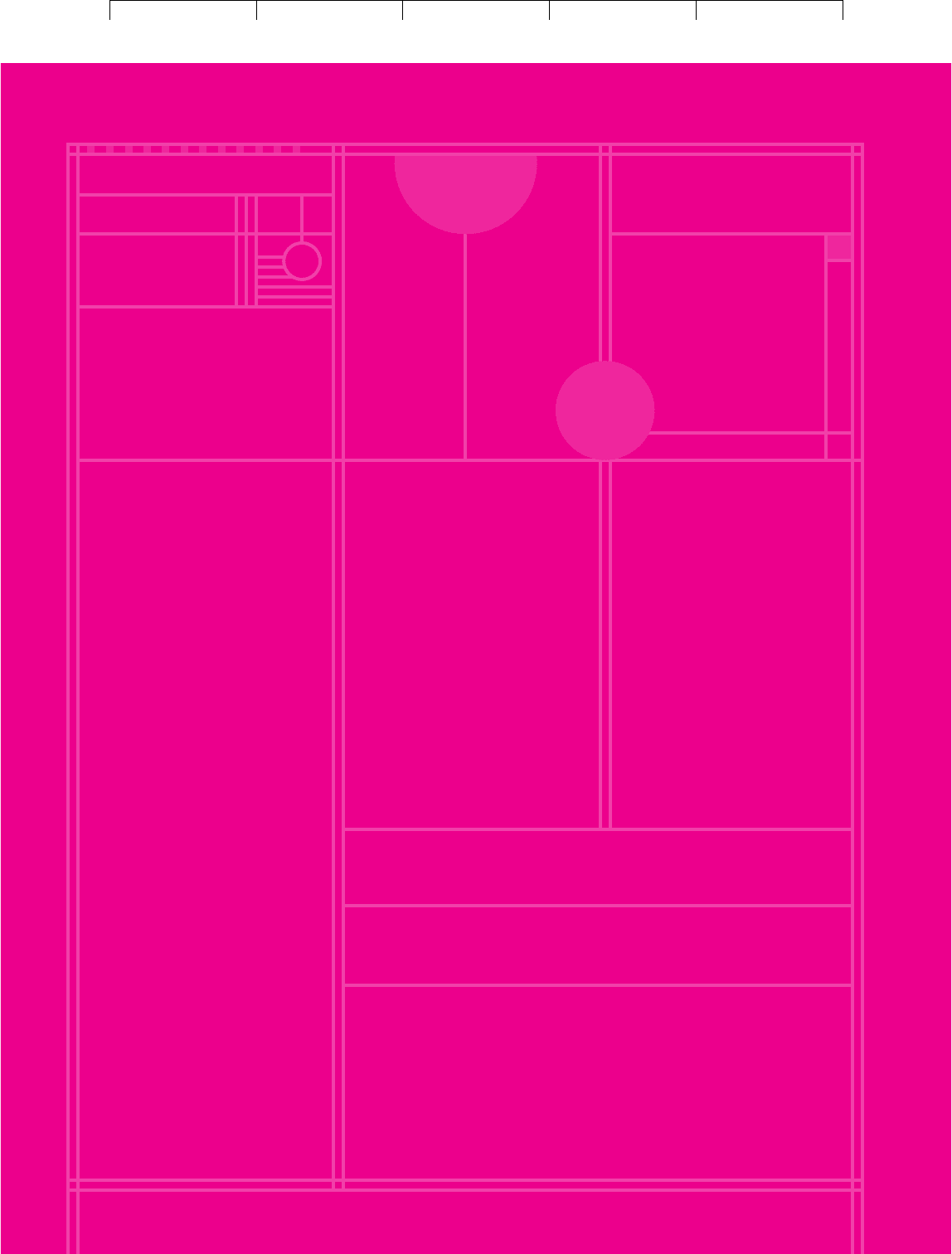
Brealey−Meyers:
Principles of Corporate
Finance, Seventh Edition
VI. Options 20. Understanding Options
© The McGraw−Hill
Companies, 2003
CHAPTER TWENTY
562
U N D E R S T A N D I N G
O P T I O N S
